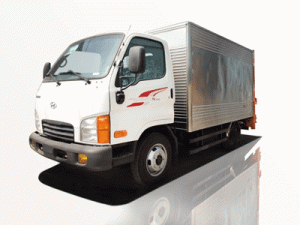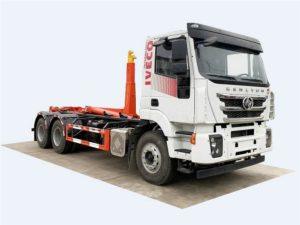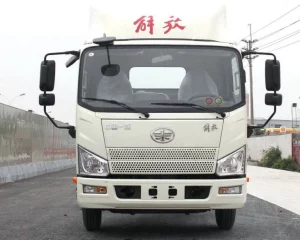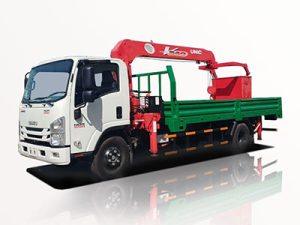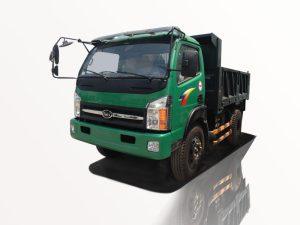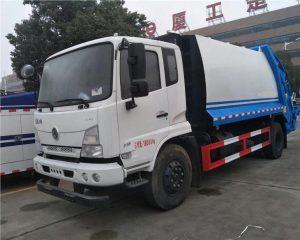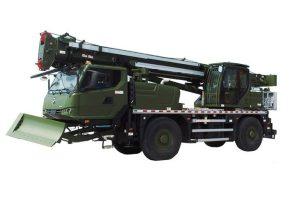Monday to Saturday - 8:00 -17:30
Maximizing Efficiency with Small Electric Utility Trucks
Introduction to Small Electric Utility Trucks
Small electric utility trucks represent a significant evolution in the landscape of transportation and logistics. With the increasing demand for sustainable practices, these vehicles have emerged as viable solutions for various industries, including utility companies, municipalities, and delivery services. Combining the versatility of traditional utility trucks with the environmental benefits of electric energy, small electric utility trucks are transforming operational efficiency while minimizing carbon footprints.
The Rise of Electric Utility Trucks
Understanding Market Trends
The shift toward electric vehicles (EVs) has been accelerated by technological advancements and a societal push for sustainability. Small electric utility trucks offer a variety of benefits, including lower operating costs, reduced maintenance, and most notably, a decreased environmental impact.
Technological Innovations
Several manufacturers have recognized the potential of small electric utility trucks and have made investments in research and development. Innovations like improved battery technology and lighter materials have led to enhanced performance and range, encouraging more businesses to make the switch.
Government Policies and Incentives
Many governments worldwide have introduced subsidies and incentives to promote the adoption of electric vehicles. These policies enhance the appeal of small electric utility trucks, making them more affordable for companies looking to transition their fleets.
Advantages of Small Electric Utility Trucks
| Advantage | Description |
|---|---|
| Environmental Impact | Significantly lower greenhouse gas emissions compared to traditional diesel trucks. |
| Cost Efficiency | Lower fuel costs and maintenance, translating into reduced operating expenses over time. |
| Quiet Operation | Electric engines provide a quieter driving experience, making them ideal for urban environments. |
| Incentives | Government rebates and tax breaks encourage the adoption of electric vehicles. |
Key Features of Small Electric Utility Trucks
Battery Range and Performance
The performance of small electric utility trucks largely hinges on the efficiency of their battery systems. Most modern electric models offer a range of 70 to 150 miles on a single charge, making them suitable for most urban and short-haul applications.
Charging Infrastructure
Access to charging stations remains a potential barrier to the widespread adoption of electric utility trucks. However, ongoing investments in charging infrastructure aim to alleviate these issues, with options for both public fast chargers and private charging stations at fleet garages.
Payload Capacity
The payload capacity of small electric utility trucks varies by model but typically ranges between 1,500 to 3,500 pounds. Companies need to assess their operational requirements to select the right model that can handle their specific needs.
Examples of Popular Models
- Ford F-150 Lightning: A well-known electric pickup with impressive payload capacity and range.
- Rivian R1T: A versatile electric vehicle with features suited for both utility and recreational use.
- Workhorse W750: Designed for delivery and utility applications, emphasizing cargo space and maneuverability.
Cost Analysis of Small Electric Utility Trucks
Initial Investment vs. Long-term Savings
The initial purchase price of small electric utility trucks can be higher than that of traditional trucks. However, the long-term savings through reduced fuel and maintenance costs often justify the upfront investment. Fleets can see a return on investment within 3 to 5 years, depending on usage and operational efficiency.
Maintaining Cost Efficiency
Fleet operators should conduct regular maintenance checks to keep trucks operating efficiently. Software solutions can track usage data to optimize routes and manage charging schedules effectively.
Financing Options and Incentives
Various financing options are available for businesses looking to invest in electric utility trucks. Leasing is a popular strategy, allowing companies to manage costs and technology upgrades effectively. Additionally, federal and state incentives can significantly offset the purchase price.
Operational Applications of Small Electric Utility Trucks
Utilities and Municipalities
Utility companies benefit from electric utility trucks due to their ability to operate quietly and efficiently on urban streets, particularly for maintenance work, streetlight servicing, and emergency responses without excess noise and emissions.
Delivery and Logistics
Small electric utility trucks are ideal for last-mile delivery operations as they can easily navigate tight spaces in urban settings. With advancements in battery technology, some models allow for extended delivery routes without the need for frequent charging.
Construction and Maintenance
Construction companies are increasingly adopting electric utility trucks for site maintenance and transport due to their ability to support various tools and materials without the environmental costs associated with diesel counterparts.
Environmental Impact and Sustainability
Carbon Footprint Reduction
Small electric utility trucks contribute significantly to reducing the carbon footprint of transportation fleets. By opting for electric over diesel, companies can lower their greenhouse gas emissions, aligning with global sustainability goals.
Recycling and End-of-Life Considerations
The future of small electric utility trucks also lies in sustainable end-of-life management. Manufacturers are beginning to offer recycling programs for batteries and vehicle components, ensuring they are environmentally responsible even after their operational life.
Challenges Facing Small Electric Utility Trucks
Charging Infrastructure Limitations
One of the main challenges remains the charging infrastructure. Although the number of charging stations is increasing, insufficient availability can hinder electric truck deployment in certain regions.
Initial Costs and Budget Constraints
While the long-term savings are appealing, the initial purchase price can be a barrier for some businesses. Companies need to balance their budgets with the potential long-term benefits of switching to electric.
Range Anxiety
Many fleet operators might experience range anxiety, fearing that electric trucks may not have sufficient range for their daily operations. Regular route planning and strategic charging can alleviate these concerns.
Tips for Transitioning to Electric Utility Trucks
Assess Your Fleet Needs
Before transitioning, conduct a thorough analysis of your fleet’s operational requirements. Understand the mileage, payload capacity, and charging needs specific to your operations to select the best electric utility truck models.
Start with a Pilot Program
Consider starting with a pilot program before fully transitioning. This allows you to gauge the electric truck’s performance and gather data on costs and savings without committing your entire fleet.
Leverage Data Analytics
Utilize telematics and data collection to monitor performance and inform decisions. Data can provide insights into optimal routes, charging times, and maintenance needs, helping transition smoothly to electric utility trucks.
FAQs About Small Electric Utility Trucks
1. What is the typical range for small electric utility trucks?
Most small electric utility trucks offer a range between 70 to 150 miles on a single charge, depending on the model and conditions.
2. Are there government incentives available for purchasing electric utility trucks?
Yes, many governments provide tax incentives, rebates, and grants to encourage the purchase of electric vehicles, including utility trucks.
3. How do small electric utility trucks compare in maintenance costs to traditional trucks?
Small electric utility trucks generally have lower maintenance costs due to fewer moving parts and no need for oil changes, meaning less downtime and lower overall maintenance expenses.
4. Can small electric utility trucks be used for heavy-duty applications?
While many small electric trucks have good payload capacities, they are best suited for light to moderate-duty applications. Specific models may be designed to handle heavier tasks, so it’s important to assess capabilities based on needs.
5. What charging options are available for electric utility trucks?
Electric utility trucks can be charged at home, at dedicated fleet charging stations, or at public fast-charging stations, depending on the infrastructure available in the area.
6. Are there any limitations on the types of terrain that electric utility trucks can handle?
Most small electric utility trucks can handle various terrains but may not perform as well as traditional trucks in extremely rugged or off-road conditions. Always consult the manufacturer’s specifications for capabilities.


